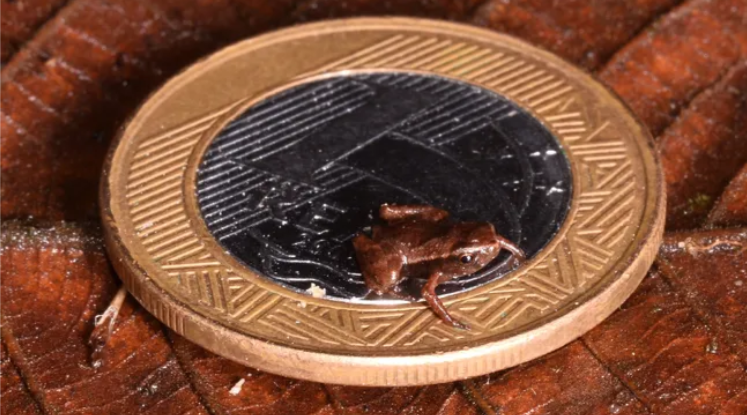See the tiniest creature on Earth
 Which animal is considered the smallest in the world (photo: Freepik)
Which animal is considered the smallest in the world (photo: Freepik)
Everyone knows that the largest creature on the planet is the blue whale. But have you ever wondered who is considered the smallest being and what it looks like? Live Science tells, who is the smallest on the planet.
What the smallest animals in the world look like
There's always the possibility that scientists will discover previously unknown species, but it's hard to imagine that these creatures would be smaller than myxozoans - a group of microscopic invertebrates related to jellyfish.
Professor at the Natural History Museum in London, Beth Okamura, believes that myxozoans are the smallest animals on Earth because many species of myxozoans in adulthood consist of just one cell.
"All of us at some point in our life cycle have tiny stages, but when we're mature, we're complex multicellular animals. That's not the case for Myxozoa. When they mature, they're still single cells," says Okamura.
In adulthood, myxozoans can reach 0.02 millimeters. According to the University of Hawaii, this is approximately 100 times smaller than a grain of sand.

This is what Myxozoa looks like (photo: Live Science)
The Myxozoa subtype has developed a simple form that corresponds to its parasitic life cycle. Most myxozoan species produce infectious aquatic spores. Cells from these spores penetrate and develop inside both vertebrate hosts, such as fish, and invertebrate hosts, such as segmented worms, explained Okamura.
For example, certain ceratomyxids infect the bile ducts of Amazonian fish and "grow" into worm-like creatures resembling multicellular nematodes, but with single-celled bodies.
While some myxozoans cause diseases in their hosts, many of them are harmless.
Smallest representatives in other evolutionary groups
According to a 2012 study published in the journal Mammal Review, the title of the smallest representative among mammals is shared by the Etruscan shrew (Suncus etruscus) and among insects - the bumblebee bat (Craseonycteris thonglongyai).
Bumblebee bats reach sizes of 2.9-3.3 cm, while shrews can grow up to 5 cm in length. However, bumblebee bats have a wingspan of approximately 15 cm, making them significantly wider than shrews during flight.

Etruscan shrew (photo: Antonio Petrone/Shutterstock.com)
The smallest vertebrates of all are miniature frogs, some of which are less than 2.5 cm in length. In February 2024, a study published in the journal Zoologica Scripta by Professor of Zoology at the State University of Santa Cruz in Brazil, Mirco Solé, named the frog Brachycephalus pulex as the smallest known vertebrate.
Adult females B. pulex have an average length of only 8.15 mm, while males measure 7.1 mm. They can comfortably fit on a human fingernail.

This is what the smallest vertebrate looks like (photo: Renato Gaiga)
This tiny species is found only on two mountains in the eastern Brazilian state of Bahia. B. pulex lives among fallen leaves near rivers and primarily feeds on mites.
B. pulex is the smallest vertebrate animal discovered by researchers, scientists emphasize that humanity is still far from knowing everything that lives on the planet.
Read also about why there are no longer such gigantic animals as dinosaurs on Earth.

